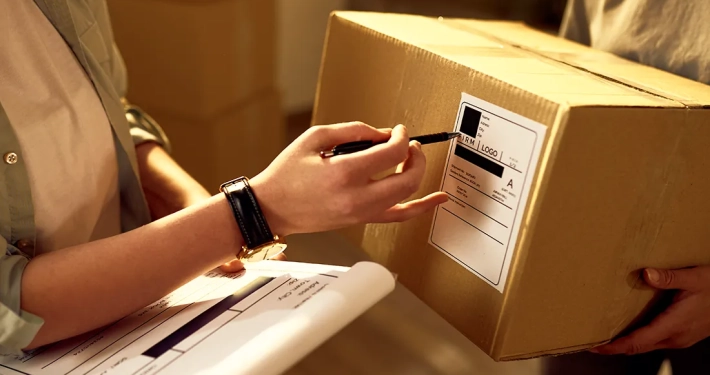Thermal transfer and thermal labels- we explain the way specific materials are produced to make sure that the solutions meet the Customer’s individual needs.
Printers for labels on rolls
Labels on rolls are currently printed with DT (direct thermal) printers and TTR (thermal transfer printers). In printers of the first type, the printhead colours the paper by applying heat to it. TTR printers, meanwhile, rely on a special ribbon. These differences have a significant impact on the properties of both types of labels.
Thermal transfer labels
Printing thermal transfer labels involves placing a special ribbon between the printer and the surface. The printhead heats up the ribbon and the ink is transferred onto the surface of the label, forming a sharp and durable image. Self-adhesive thermal transfer labels are made using a variety of materials that differ with regard to their resistance to adverse conditions. This makes them suitable for use indoors as well as outdoors.
The main advantages offered by this technology include:
- high quality of the prints – sharp fonts and colours ensure excellent readability, while attractive label designs can showcase the brand;
- resistance to water, light, and abrasion;
- durability – the print should not fade even after a few years;
- printing on different surfaces: paper, film, and other artificial surfaces (including directly on the packaging);
As thermal transfer labels are highly resistant to abrasion, they work very well in difficult conditions. They are used for i.a. marking clothing, electronic equipment (including nameplates for various appliances), and samples in labs. Their resistance to low temperatures makes them suitable for use in cold stores and freezers.
Thermal labels
Thermal labels are made with the use of special printers. Unlike the production of thermal transfer labels, their production does not require the use of the thermal transfer ribbon, ink, or toner. Thermal labels are made by applying the printhead to paper coated with a special thermoactive substance, which oxidises, leaving a dark mark. This technology produces black prints characterised by excellent readability.
The main advantages of these label designs include:
- high quality prints,
- low cost – no additional supplies are required for their production;
- no waste – this technology is especially appreciated by companies that care about the natural environment and that seek to implement eco-friendly solutions,
- compact size of DT printers and simplicity of the whole process (the printer can be used as a mobile device, suitable for moving it around),
- high resolution and high image quality – these printers are very often used for barcode printing, as they can print bars of specific width with precision,
- highly durable printing equipment – the printers are suitable for use in offices, shops, warehouses, and production plants.
Due to their low resistance to water and changing temperatures, thermal labels are most often applied to products that are kept indoors. It is worth remembering that the printed texts may sometimes fade due to exposure to light and heat.
This technology is suitable for i.a. printing postal and courier labels, receipts, bills, and parking tickets.
Professional label manufacturer– check our offer
ANIFLEX printing house operates as a manufacturer of self-adhesive labels (https://aniflex.pl/oferta/etykiety-samoprzylepne) and heat shrink labels (https://aniflex.pl/oferta/etykiety-termokurczliwe) with extensive experience in the industry. We advise our customers at the design stage and help them select the technology that suits their requirements. Check it out! Got any questions? Contact us at (https://aniflex.pl/kontakt) – our advisers will answer all your questions about working with us.

